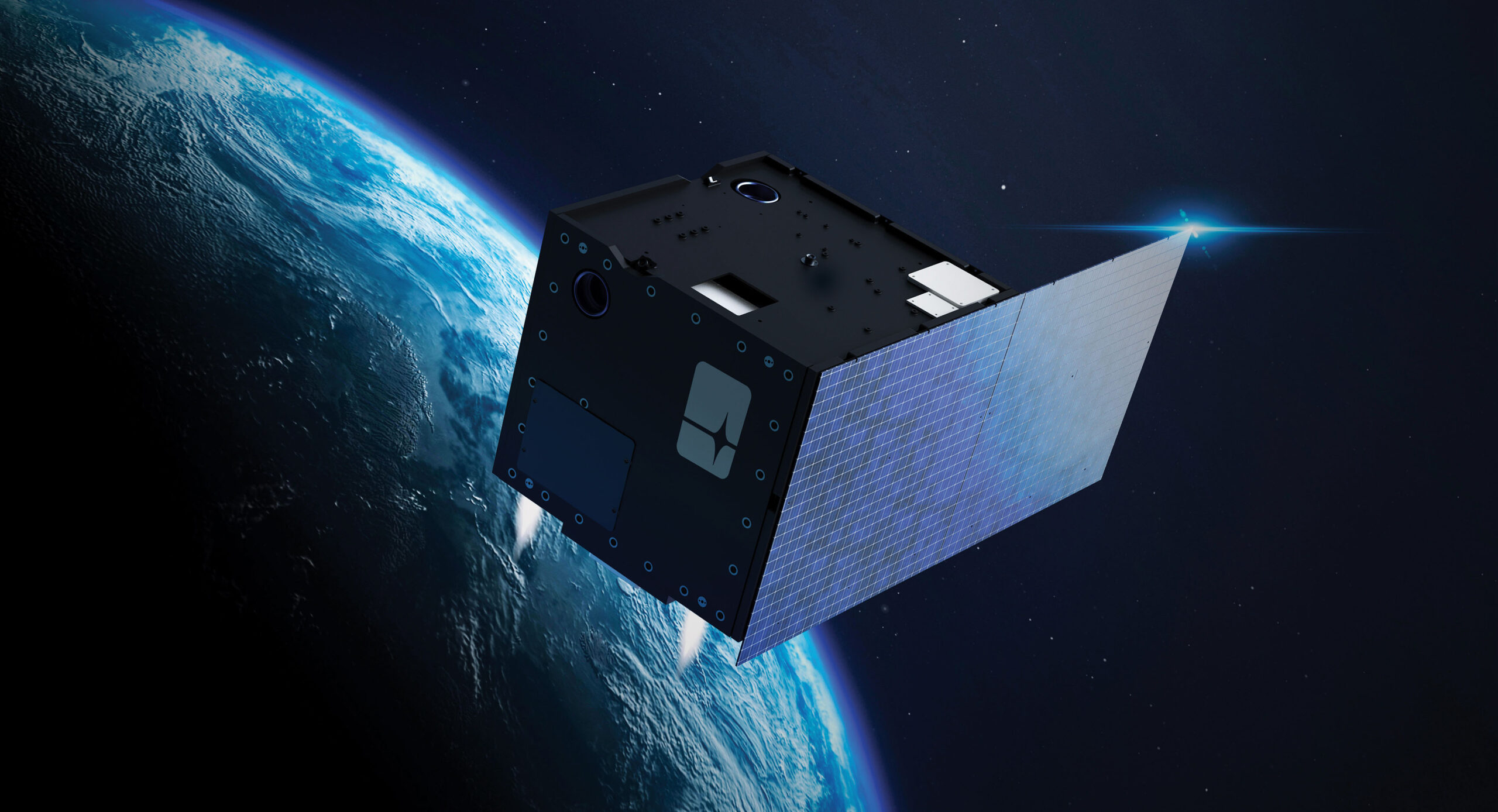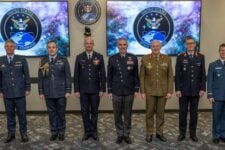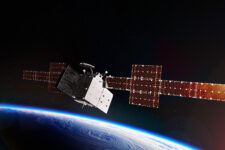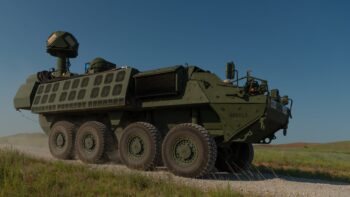
Victus Nox (Millennium Space Systems)
When it comes to satellites, physics rules. When it comes to delivering small satellites rapidly, Millennium’s Law rules — at least at Millennium Space Systems, a Boeing Company.
“Rather than the law of physics, Millennium’s Law is a play on Moore’s law, an observation and projection of a historical trend,” said Jason Kim, chief executive officer, Millennium Space Systems. “Over time, our trend is nearly halving the delivery times of small satellites.”
Examples of delivery times from authorization-to-proceed to delivery include:
- Rapid Pathfinder – 24 months in 2011,
- Tetra-1 – 13 months in 2019, and
- Victus Nox – eight months in 2023.
See the trend?
This is game changing for national security space, a mission area that requires capabilities on orbit faster than ever before.
Testifying recently at the House Armed Services Strategic Forces subcommittee hearing on national security space activities, John Plumb, assistant secretary of defense for space policy, stressed the importance of funding missile warning and missile tracking systems and new proliferated resilient architectures.
“Countering the threat requires a layered architecture where satellites work together across orbits and missions,” said Kim. “And small sats are primed to support our nation’s missile warning and tracking infrastructure.”
The inevitable question is, is Millennium’s Law sustainable given the importance small sats play in proliferated LEO, MEO and GEO in a layered, resilient space architecture?
For Millennium Space Systems, the answer is a resounding, yes — anything is possible. It boils down to a few critical factors: intimate national security space mission knowledge, hybrid characteristics, vertical integration and manufacturing capacity.
The critical factors, explained.
Let’s take the missile warning and tracking mission as an example. For obvious reasons, it’s a high-stakes, critical mission that requires high-performance small satellites that can support advanced payloads.
“This means we must get it right the first time,” said Lindsay Dewald, Space Mission program manager, Millennium Space Systems. “To start, we partner closely with our customers to understand their mission needs.”
The team can then apply the company’s intimate mission knowledge — the type of knowledge that only comes with learned experience — to demonstrate how small satellites fit into the existing missile-defense infrastructure. It’s not just experience from design, build, integration, manufacture and test, it’s from mission operations.
Millennium Space Systems conducts mission operations for most of their programs from their headquarters in El Segundo, California.
“Our teams can immediately apply on-orbit lessons learned to the design of a new satellite or constellation,” said Dewald. “And because we build our satellites on such short timelines, we have this constant feedback loop that continuously informs and improves our constellations.”
As a hybrid company, one that pulls together the best of both commercial and traditional aerospace industries, Millennium can take advantage of what the commercial industry iterates. The company quickly readies commercial technology for operation in space through systems engineering rigor and its space-qualification processes.
Furthering tech refresh is the company’s 80% vertical integration.
“Not only can we control schedule, cost and risk, we have a deep understanding of the technical details of our products in a way that allows us to know how they work and how to modify them for the most performance,” said Dewald. “But we don’t rest on our laurels. Our common core components have multiple generations of tech refresh to ensure we’re providing the most relevant capability for the mission.”
The company also went through an acquisition in 2018 by The Boeing Company, further enhancing their mission knowledge and capability. Boeing is instrumental in Millennium’s growth, paving the way for their high-throughput manufacturing capacity and a wealth of proven experience in areas like additive manufacturing, digital engineering and design for manufacturability and test.
Unveiled in 2022, Millennium’s Small Sat Factory in El Segundo provides the ability to deliver small satellite constellations at scale.
More lessons learned.
“We are continuing to learn, building on proven capabilities like autonomous operations and onboard processing,” said Kim. “And we are already seeing these benefits play out in programs today.”
The approach is to always plan a constellation that leans on autonomy from Day One. For missile warning and tracking, in particular, completely automated task management based on onboard data processing and external tasking cues or requests just makes sense.
“We are pushing the boundaries of what we can do onboard — processing data at the point of collection,” said Doug Hulse, director, Sensing Portfolio, Millennium Space Systems. “Now you can quickly triage large amounts of data onboard in milliseconds, instead of pushing the data to the ground for processing. One thing we are learning is how we bring our small-satellite constellation approach alongside traditional systems and make the data coming from our systems not just available, but useful, to decision makers.”
The team applied various lessons learned to programs like Tetra-1, pulling in its common-core components to build out the space vehicle. Tetra-1 also took advantage of the company’s flexible bus, nicknamed Altair, which built off experience from Altair Pathfinder, a 3D polymer-printed small satellite that proved out common-core components on orbit.
Today, many of Millennium’s previously launched space vehicles find heritage in the Altair bus.
“One thing that is unique at Millennium is the modularity of our satellites and our ability to design for multiple orbits,” said Michael Gabor, vice president, Business Development at Millennium Space Systems. “We have medium-Earth orbit systems that can work in low-Earth orbit. We have geosynchronous systems retrofitted for LEO applications. And we’re demonstrating this flexibility across not just orbits, but missions.”
Flexibility across orbits and missions is one of the enablers for Victus Nox, a Tactically Responsive Space program for the U.S. Space Force’s Space Systems Command Space Safari Office.
“Delivering a satellite in eight months is no small feat,” said Andrew Chau, Victus Nox program manager at Millennium Space Systems. “We were able to do it because we have deliberately rated our common-core components and buses to operate in any orbit for any mission.”
In the case of Victus Nox, the team pulled a bus from one of the company’s active production lines.
“Everything we’re doing with Victus Nox is under compressed timelines, and there isn’t a ready playbook on processes for the launch of satellite vehicles for tactically responsive space,” said Chau. “That’s why we’re doing this. What can we learn? What we’re looking at are the deltas — to move fast, what capabilities exist today and what capabilities or processes do we need in the future?”
Lessons like this will continue to drive Millennium’s Law.
What the future holds.
The team will take all lessons learned forward in future programs, whether a prototype, a constellation or pulling a bus from one of several active production lines.
At the core of the company’s ability to achieve Millennium’s Law is its people, whose spirit is curious, bold and clever.
“We are nothing without our people, these disruptive innovators who challenge the status quo and don’t shy away from challenges,” said Kim. “We know the criticality of the missions we serve. That’s why we pour ourselves into the mantra, ‘it must work.’”
Millennium’s culture unlocks this spirit.
“We aren’t above mistakes — they’re inevitable,” said Chau. “What’s important is being willing to take those calculated risks and apply the lessons learned, good and bad, to future programs for their ultimate success.”
Delivering at the speed of Millennium’s Law isn’t a game. It’s a national security imperative.
“The reality is these high-stakes missions are critical to national security,” said Kim. “And the faster we get capabilities on orbit, the more informed our decision-makers and operators will be.”
Do you want to contribute to the national security space mission? Consider a career at Millennium Space Systems. Apply today at www.millennium-space.com/careers.





















